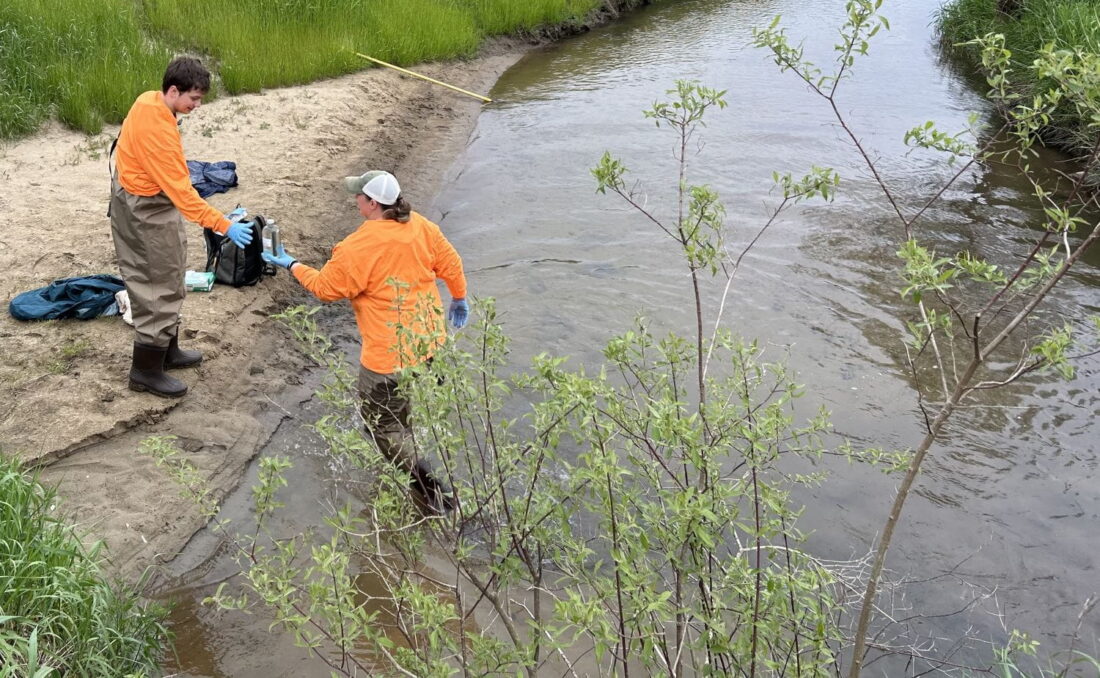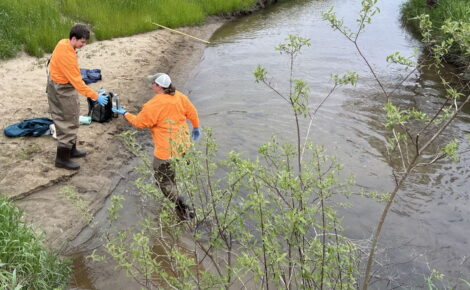Michiganders convene to meet the challenge of microplastics

Courtesy Photo by Michigan Department of Environment, Great Lakes, and Energy (EGLE) Great Lakes Environmental Center staff are seen sampling water for microplastics.
Microplastics Awareness Week wrapped-up on Sunday and featured a virtual Great Lakes Microplastics Summit on Wednesday, according to Friday’s Michigan Department of Environment, Great Lakes, and Energy (EGLE) press release.
EGLE states that the summit hosted 2,700 registrants, which was a record number for an online event presented by the department.
According to the release, registrants represented 48 states, 29 countries, and every continent but Antarctica. Academics and students; federal, state, tribal, and local officials; representatives of business, industry, and advocacy organizations; researchers and scientists; and members of the public attended.
EGLE states that microplastics range from the size of a pencil eraser to “the limits of visibility,” and are present in Michigan’s water, soil, air, and wildlife in the form of beads, fragments, pellets, dust, film, foam, and fibers.
The department explains in the release that microplastics can be created when larger plastic items break up in the sun and waves over time, or they can be manufactured, like microbeads and pellets. They represent part of the estimated 10,000 metric tons of plastic entering the Great Lakes each year.
According to the release, studies in the Great Lakes show concentrations around urban and nearshore areas, especially where rivers and drains empty. The effects on human and environmental health are subjects of research, and scientists suspect these particles can absorb and release harmful chemicals. Scientists believe they may impact development and reproduction of aquatic species.
EGLE states the department is “stepping up its microplastics research” and monitoring with a one-time, $2 million state appropriation, over five fiscal years, to improve the understanding of microplastics in Michigan’s lakes, rivers, and drinking water.
According to the release, the department will incorporate microplastics sampling into existing river and stream monitoring programs, study the occurrence of microplastics in public drinking water supplies, support external research with grant opportunities, and develop a statewide microplastics strategy to guide policies, monitoring, education, and prevention.
EGLE recommends that people switch to reusable bags and bottles, limit single-use plastics whenever possible, and install washing machine filters to reduce microfibers. According to the release, these actions can help reduce the amount of plastics and microplastics households release into the environment.





